Back at the beginning of the 20th century, Spain had a significant number of relatively small gunmaking shops throughout its northern Basque area. The area has been known for its metalworking resources and prowess for literally two thousand years, and it is little surprise that firearms manufacture would thrive there. In addition, a loophole in Spanish patent law gave these small shops an international advantage: a Spanish patent was only valid if the device in question was actually manufactured in Spain within three years of patent being granted. The major arms designers of the time had their factories in France, Germany, Great Britain, and elsewhere, but not in Spain. So new firearms developments were, practically speaking, not patented in Spain and could be copied there without legal penalty.
One of the more successful early automatic pistol designs of the turn of the century was John Browning’s Colt and FN 1903 (which were different guns, but used the same basic design). Spanish shops quickly began making their own copies of this very popular pistol, and one of them hit the proverbial jackpot. In 1914, the company of Gabilondo y Urresti (later to become known as Llama) built a better-than-average 1903 copy called the Ruby, chambered for .32ACP and with a 9-round magazine (larger than most of these types of pistols). Gabilondo sent a sample to France, whose government was in need of a huge number of pistols for the recently-begun First World War. The French found the pistol to be well-suited to their needs (cheap and effective), and proceeded to place a standing order in May 1915 for 10,000 of them per month.
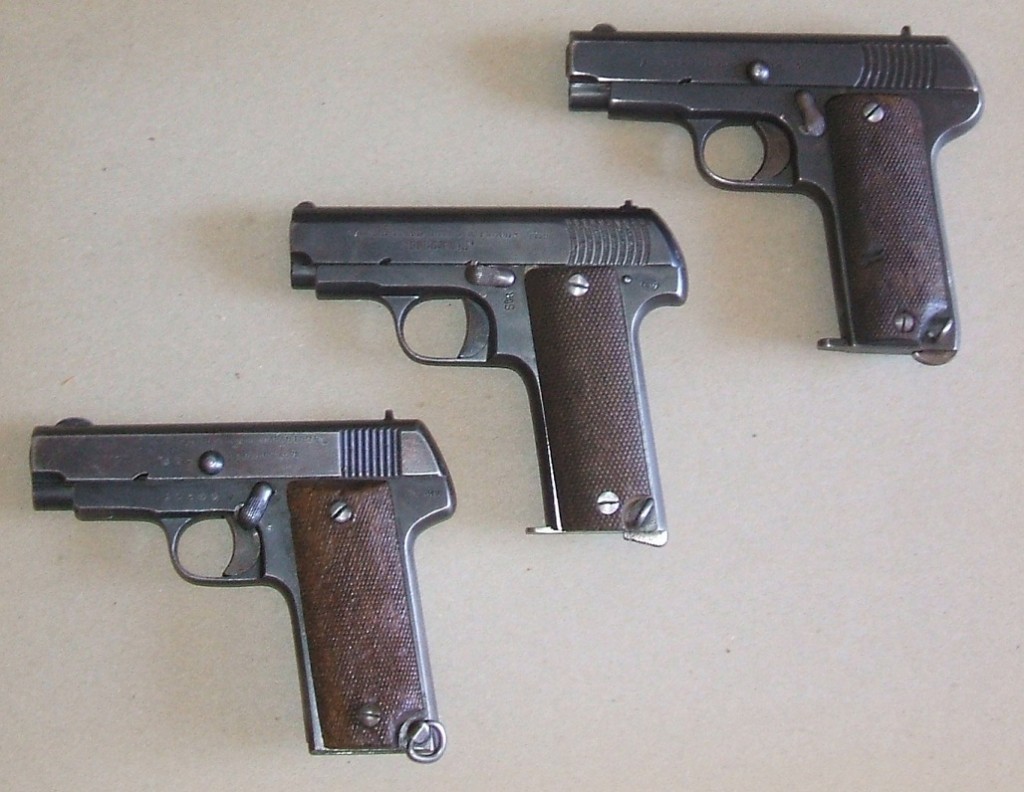
One can only imagine the Gabilondo shop receiving news of this staggering order – because at that time they had less than 10 employees (between 5 and 8, depending on which source you read). There is no conceivable way they could have produced anywhere near this quantity of firearms, but now they had a contract for them. Talk about the right kind of problem to have! In order to meet the order, Gabilondo contracted with four other gunmakers in the city of Eibar: Armeria Elgobaressa y Cia, Echealasa y Vincinai y Cia, Hijos de Angel Echeverria y Cia, and Iraola Salaverria y Cia (the “y Cia” means “and Company”). Each of these subcontractors was to produce 5000 pistols per month for Gabilondo, who would control overall QC and deliver the guns to France.By this time (August 1915) the French contract had increased to 30,000 pistols per months, and would later jump again to 50,000 per month.
The contract terms specified that the subcontractors would be fined for any failure to meet the monthly quota, and any pistols over the required 5000 would be purchased by Gabilondo at the standard rate. The early shipments of guns from Gabilondo were satisfactory to the French Army, but not surprisingly the contract terms led to a degradation of quality as shops pushed quantity over quality to maximize their profit. Still, France continued to demand more and more pistols, and the situation grew out of Gabilondo’s control. Shops around Eibar in need of work saw the French as a golden opportunity, and jumped into the fray. Some worked with Gabilondo, while many others negotiated their own deals directly with French purchasing agents. The resulting pistols had the same general configuration – .32ACP, short barrels, 9-round magazines, shrouded hammers, and safeties mounted above the trigger. None of them shared interchangeable parts (or magazines), though, and each manufacturer used its own trademark name.
For the obsessive dedicated collector, these trade names make Eibar-type pistols a virtually bottomless well. At least 45 different small companies made these pistols, sometimes marked with a company name and sometimes with names like “Liberty”, “Destroyer”, “Venus”, “Modelo 1916”, “Trust”, and others. In addition to French sales, many were also sold to the Italian Army, as that country struggled to keep up with domestic production of military pistols. Some companies manufactured the guns from scratch, while others subcontractor some or even all of the component parts to other suppliers. Production of the guns continued into the 1920s, and all in all about a million guns of the Ruby/Eibar type were made in Spain. There are a few ways to determine if a particular one was made for French WWI contract (and thus likely saw military use).
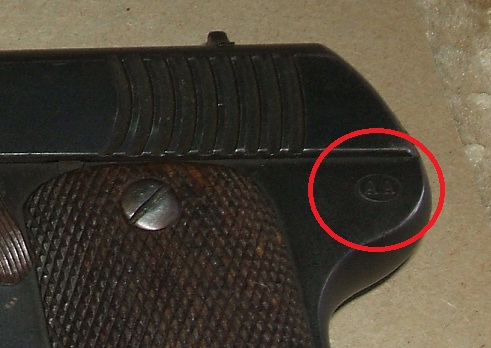
Pistols made for the French Army typically had a one- or two-letter mark in an oval on the rear left of the frame. These letters identified the manufacturer, irrespective of trademark name (see below for a list of these markings). In addition, pistols were supposed to be marked with a star or pair of stars on the bottom of the frame alongside the magazine well when they were formally accepted for French service. Not all of them received this depending on how urgent the need for guns was when a shipment arrived, but it is a useful marking to look for.
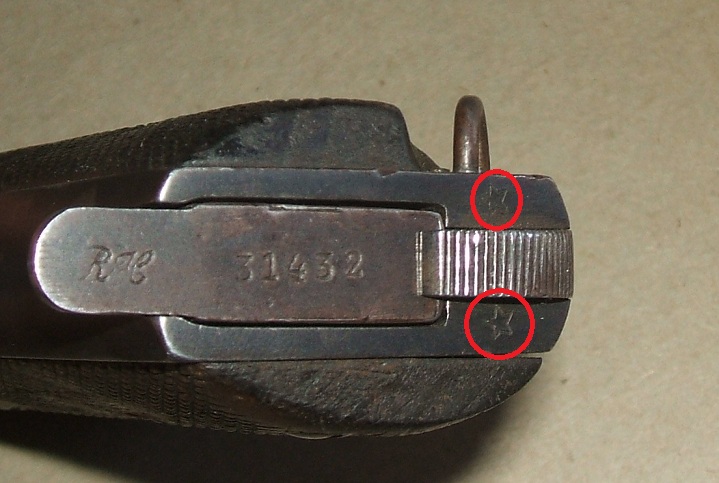
The Eibar/Ruby pistols’ most distinctive identifying features are:
- Shrouded hammer
- Lumpy-looking safety lever above trigger
- Longitudinal grooves around the muzzle for disassembly
- Long 9-round magazine with heel release
Any two different makers’ version will vary in the details of other features, including slide length, slide serrations, lanyard loop, sights, magazine release, grip panels, and exact frame profile. Mechanically, they are all straight blowback and lack a last-round holdopen feature or grip safety.
One feature that can be tied to wartime service is the addition of a large rivet-looking knob on the left side of the slide. This was added to address the reported problem of tight French military holsters catching and disengaging the safety lever when the guns were drawn, and this was blamed for a number of accidental discharges. The added knob held the holster material up away from the side of the gun, and prevented it from catching on the safety. The knob was clearly added after manufacture, as it will typically cover part of the serial number or other markings on the slide.
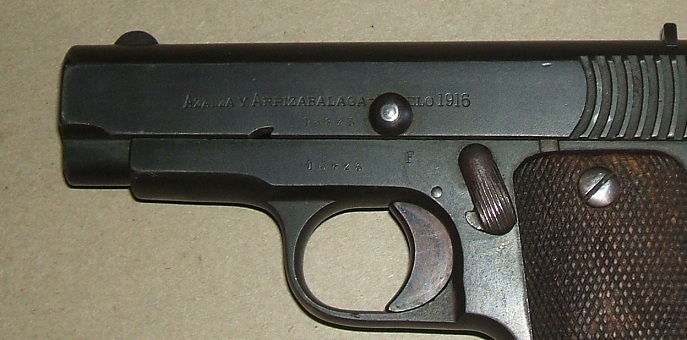
Eibar Manufacturers and Codes
The list of manufacturer codes is too long to list here in a blog post – but you can see the whole thing over on the Vault page for the Eibar/Ruby

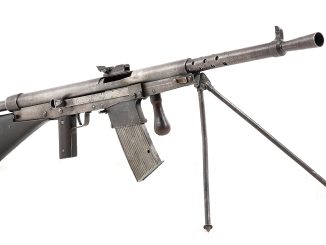
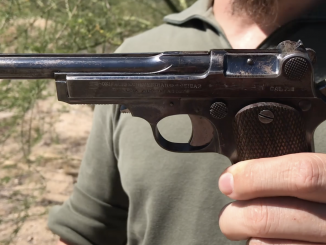

I clearly remember the mail order ads for these guns in “Guns & Ammo” magazine when I was a kid in the ’60s. I always thought they were interesting looking guns, although I’ve never owned one. The GCA ’68 brought an end to all of that, unfortunately.
Great! I like the Ruby many variants, especially the more exotic ones, with extended magazines and full auto mode!
As for WWI military contracts, and besides from the very large French ones, the Basque companies also exported pistols and revolvers to Romania, whose army lost access to their supplier of regulation guns (Steyr) when the country entered the war on the Entente side. After the war, China also absorbed a sizeable amount of Ruby type pistols.
Dear Mr. Aballe! Your information abouth “exported (Eibar-made) pistols and revolvers to Romania” is very intresting for me.
Wonderful! I had one a long time ago as a “throwdown” special (don’t ask) and actually tried to hit a target with it. Minute of Bad Guy accuracy was as good as I got. (all hit a silhouette target at 10 yards, the group looked like shotgun buckshot blast from 45 yards). Probably better than nothing.
Eibar steel rules.
Dean from Idaho
I love Basque guns, in all of their wierd and varied shapes and sizes.
Do you know what date the Spanish patent law changed to prevent such wonderful copying?
Is there any good list of the other types of pistols the Eibar gunsmiths copied besides the Browning 1903?
does anyone have a value for these weapons adn can they be safely fired with the proper ammo?
As long as they’re in decent condition, they should be fine to shoot. Value varies, but generally $150-$250. They don’t have much commercial value (Spanish and French aren’t adjectives the average gun buyer sees as value-enhancing), which makes them a nice niche for the collector on a budget.
hello, can you help me. i need some parts for a star firestar m40 pistol. can you help me or do you know of anyone that could help me. thank you